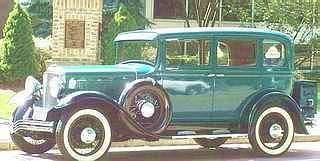I bought a brand new 1981 Suzuki GS450T (traditional) motorcycle. I was in my forties and had been riding bikes off and on since I was less than twenty, but this was the first new one I could call my own and I was proud of it. It was midnight black with a bit of medium blue trim, and I thought it was a good looker if ever I saw one.
All bikers will tell you, if they’ve a mind to be truthful, that soon after acquiring a different bike they have to know “what’ll it do?”, and there’s only one way to find out. So it was that one fine evening I was in a neighboring township where I knew there to be a fairly straight not too busy sort of a country road. I rode one direction on it uneventfully, found no traffic, and turned for a run in the opposite direction. I had about a mile of straight deserted road for my use.
I cranked it up through the five gears as rapidly as I knew how and held that throttle wide open. I watched the MPH jump from nothing to 85 quick enough to make my head spin, but that was all she had. I thought I might have seen 86-87 once, but the needle was vibrating so it was questionable. Damn it where did those blinking red lights behind me come from?
I passed an old pickup as I was slowing down, then I pulled over to the side of the road to wait for the inevitable. The beat up old truck went by me and the driver smiled as he waved. The young trooper and I had no conversation as he wrote me a citation for 75 MPH. What was there to discuss?
A couple of weeks later I found myself standing in front of a Justice of the Peace in the adjoining township. He asked how I plead, and I told him I guessed I was guilty.
He continued on, “Did you get this ticket on the O’burg Road?”
I said, “Yes, I did.”
He said, “About 7 p.m.?”
I said, “Yes.”
He said, “I didn’t recognize you without a helmet on.”
I said, “You drive an old Chevy pickup, don’t you?”
He said, “Yes, I do.”
It was obvious I was in trouble with this one. You can’t hardly tell the judge you weren’t going that fast when you had passed him.
The old JP asked me to wait over at one side for a few minutes if I would, and went on to the only remaining case left in the room. When he had finished with that fellow he removed his black robe and hung it on a tree in the corner.
“You know,” he spoke, “I used to ride a Harley myself, and I always had to know what my current bike would do. What’d you get out of that pretty little thing you were riding?”
I said, “I could only get about 85, or maybe 86 or 7 out of it. That’s it. There wasn’t any more in it.”
He spoke softly, “You were doing more than that when you went by me, but I’ll take your word for it. You do know that this state has all motorcycle speedometers pegged so they won’t read more than 85 don’t you?”
I said, “No, I did not know that.”
He said, “Look at your speedometer and I think you’ll find a peg in it that won’t allow the speedometer to go past 85 MPH.”
He went on to tell me he thought I ought to plead the charge down to a vehicle infraction as I wouldn’t get any points against my license for that. I agreed and paid a small fine for a bad tire, and the old JP kindly said as I left, “Please don’t come back to my court for speeding again for a while.”
After I assured him he wouldn’t see me again for a while as this was uncharacteristic of me, he told me he hoped I wouldn’t try it, but he estimated the bike was in excess of 100 when I blew by him. I never found out because he was correct. It was my imagination it had registered more than the 85 MPH it was actually pegged at, that I had not previously noticed.





.JPG)
